Difference Between Cup and Mug
Mar 22,2024 | TeaTsy Team
The primary distinction between a cup and a mug lies in their size, shape, and intended use. Typically, a mug is larger, often without a handle, and designed for leisurely enjoying a beverage, holding approximately 10-13 ounces. In contrast, a cup is smaller, usually comes with a handle, and is meant for quicker consumption of drinks like tea.
These differences are not only reflected in their physical appearance but also in how and for what beverages they are best suited. Let’s explore these nuances further to understand why we choose one over the other for our morning rituals.
What is a Tea Cup

Interestingly, no one can put a timeline on the existence of the cup because it has served humanity from time immemorial. A cup typically comes in a small, short, and wide container. It can usually hold tea quantity between 6-8 ounces and features a narrow structure with a wider mouth. It is distinguished by its size, typically smaller than a coffee mug, and its design, which usually includes a handle for easy holding.
The material made up of cups is classified into various categories. But the ceramic or porcelain material is the most widely used materials. Most people have attributed this choice to the insulation property and the beautiful outlook of the porcelain.
There are various roles that cups can play in our tea-drinking experience. This goes beyond the realm of drinking tea; a cup can serve as a piece of adornment that can beautify your shelf and wardrobe.
Also included are the various tea cup designs like the handmade Yue Klein Celadon tea cup, classic or antique-styled Ding Kiln, etc. In short, tea cups are the overall embodiment of functionality and aesthetics. This is inferred from the gale of versatility and timeless designs that solidify its stand as an important piece of your tea adventure.
What is a Mug

The mug has long been classified as a symbol of comfort and personality. It has been a popular piece that makes up our daily routine. Starting from the sturdy shape that allows it to be a go-to piece for morning tea, coffee, and other beverages. Cups are usually cylindrical with a wide opening at the top.
The mug provides ample space that can take about 8-12 ounces of any beverage you like. Cups are usually cylindrical with a wide opening at the top.
Mugs are made with various materials like glass, stainless steel, ceramics, and others. Just like cups, the most popular materials you can find around are the ceramic or porcelain ones due to their exquisiteness and insulation properties.
It’s interesting to note that apart from its function for hot drinks, you can also use the mug as a beautifying piece due to its sturdy shape that can hold some greeneries in your home and workspace.
Also, most people have incorporated mugs into their gift packages and, most importantly, souvenirs. This is enabled by its wide variety of designs that are customizable to your taste. For instance, our lucky kitten porcelain tea mug, snowy sunshine, or plain high borosilicate glass mug are available to give you a taste of the exquisiteness.
Difference Between Teacup and Mug
For millennials, tea has become a staple and leveler between the commoners and the elites. All walks of human existence have enjoyed the benefits and the subtle experience that tea consumption brings. Most researchers have even attributed yea consumption as a magical piece that ensures longevity and overall well-being.
However, the vessels we use to consume this important beverage have a huge part in how we enjoy the exquisite taste and experience beckoned to us by tea. Therefore, we need to explore the key difference between the teacup and tea mug to understand the basis upon which each of them can elevate your tea experience. The following are the major differences between tea mugs and tea cups.
Size
Ideally, teacups and tea mugs have the most striking difference in size and shape. Teacups are smaller in size, and it has a tea-carrying capacity of around 4-6 ounces. This site is an ideal one for its formal status that ensures everyone can take a sip on the go.
Additionally, the smaller size of the teacup conforms with the quick and hot flaring savory aroma and flavors of tea that need to be consumed before they get cold. Contrastingly, the tea mug has a much broader size and larger capacity that makes it ideal for tea sizes of around 8-12 ounces.
The larger size of the tea mug makes it an ideal fit for leisure tea consumption, where you intend to stay for an extensive period and savor your tea without rushing.
Shapes
Tea cup and tea mug shapes also distinguished the two tea companions. Tea mugs are characteristically tall, rock, and cylindrical in most cases. There are many shapes that you can find in your yea cup, but one thing that is typical of all shapes is how they taper slightly towards the top to trap some of the tea aromas since you are using them for a long period of leisure tea sipping.
On the other hand, tea cups have a short, wide shape that narrows down from top to bottom. Instead of having a broader or taller height, the teacup has a wider mouth that allows you to enjoy the full rush of the tea aroma escaping up from the rounded base.
Material
When we talk about the materials used in making tea cups and tea mugs, we have to look into their aesthetic balance and their insulation properties. Teacups are originally made from a wide variety of materials such as ceramics, porcelain, steel, glass, and others.
This cluster of exquisite materials showcases the beautiful appearance of the tea cup together with a delicate body that ensures a very hot tea can get to a consumable temperature.
Also, tea cup materials showcase the beauty of the tea-breaking processes, especially when you purchase any of our heat-resistant borosilicate glass teapot to your delight. On the other hand, tea mugs are made from sturdier materials like stoneware ceramics, porcelain, double-walled stainless steel, etc.
This choice of materials is made to function inversely to that of tea cups because tea mugs are needed for better heat retention since it’s required to keep the tea warm for an extended period.
Usage
Generally, tea cups are designed to fit into formal settings or etiquette. This is plausible when we look at the obvious characteristics of the teacup, including the shape and other tea set components, like a saucer that provides a place where people can place the cup after sipping.
It doesn’t matter the level of meetings or places with gentle and elegant places; a teacup should form one of the most important pieces that should be your emblem of relaxation.
Contrastingly, the tea mug is characterized by its larger body, and no saucer is a familiar object that is mostly found in the family and many other nonformal places.
The design makeup of the tea mug places it in the realm of a versatile piece that fits the category of casual tea experience. Whether you are tired of a long day's work, or you want to savor a feeling of relaxation every morning, you should gravitate towards a feel of relaxing tea mug for your enjoyment.
|
Feature |
Teacup |
Tea Mug |
|
Capacity |
Smaller (4-6 oz) |
Larger (8-12 oz or more) |
|
Shape |
Wider mouth, shorter height |
Wider variety of shapes, may taper towards top |
|
Material |
Fine china or porcelain (delicate, thin walls) |
Ceramic stoneware, double-walled stainless steel (sturdy, heat retention) |
|
Handle |
Delicate handle, designed for one or two fingers |
Sturdy handle, comfortable for full hand grip |
|
Drinking Style |
Formal, with pinky finger extended |
Casual |
|
Weight |
Lighter (due to delicate material) |
Heavier (due to sturdier material) |
|
Gift Option |
Often seen as a more elegant gift |
Can be a casual or personalized gift |
|
Occasion |
Afternoon tea, tea parties, formal gatherings |
Everyday use, casual tea drinking |
|
Tea Specific |
Ideal for delicate teas with subtle flavors |
Can be used for a wider variety of teas |
|
Customization |
Often features intricate designs or patterns |
Can be personalized with photos, logos, or text |
|
Heat Retention |
Lower heat retention (tea cools quickly) |
Higher heat retention (keeps tea warm longer) |
|
Versatility |
Limited (primarily for tea and small desserts) |
More versatile (can be used for soup, hot cocoa, etc.) |
|
Portability |
Less portable due to delicate nature |
More portable (especially travel mugs) |
|
Rim Design |
Wider rim to facilitate aroma release |
Rim design can vary |
Tea Cup vs Mug: Which One is The Best
The long-standing debate between teacups and mugs is not going away anytime soon because human wants and preferences are quite subjective. On this note, we are going to elicit the peculiarities and strengths of tea cups and mugs so that you can pick which one works best for you.
The teacup is designed with a thinner or lighter structure to retain heat, while the narrow mouth is constructed to even out the tea aroma. Additionally, the tea cup also comes with a saucer and some tiled spoons.
This peculiarity makes tea cup ideal for people who enjoy a small, savory aroma of tea that they can consume within a short period. Teacups are good for official gatherings like office meetings, tea parties, family celebrations, and other important gatherings.
On the other hand, a tea mug is more spacious and holds a large volume of tea, making it a great option for people who want to enjoy a more prolonged sip of their tea. Other characteristics of a tea mug are the sturdy shape and thinking wall that ensures your tea doesn’t get cooled down easily.
Mug has that informal look, which makes them ideal for just random gatherings or a meet and greet occasion, and in some cases, it’s very good for people who want a cozy tea-drinking experience in their home.
So, we have delved into the key peculiarity between a tea cup and a mug; what next is deciding which one is best for you. It will be quite biased to force one choice on your throat. However, what can give you a clear line of choice is to go through the overall characteristics of tea cups and mugs and fix them with your personal preferences and opinions.
Final Thought: The Difference Between a Cup and a Mug
Teacups and mugs have enjoyed considerable popularity since time immemorial. Despite the abundance of similarities between teacups and mugs, there are so many things that set them apart. For instance, tea cups are designed to cater to the demographic of tea drinkers who are in love with the savory aroma of their tea.
Also included in the cup is the additional tea saucer and spoon, which makes them a thing of formal gatherings and occasional family events.
On the other hand, a tea mug is ideal for people who enjoy a large volume of tea for an extensive period. Therefore, understanding the whole distinction between these two vessels still sets you on the path to fixing the right drinkware for the right occasion.



.jpeg?w=750&h=772)



